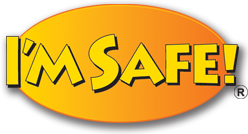Online Child Safety

In a report published late last year in December 2022, Etienne Krug, the Director of the WHO Department of Social Determinants of Health, noted that “Our children spend more and more time online; as such, it is our duty to make the online environment safe.”
The Cybersecurity & Infrastructure Security Agency (CISA) goes on to indicate that children present challenges with regard to cyber safety because of their natural characteristics of “innocence, curiosity, desire for independence, and fear of punishment.”
While discussing internet safety and developing an online safety plan is always a good idea, as is supervising young children’s use of the internet, we want to highlight a few areas of concern to consider when thinking about child safety online throughout this new year.
Cyberbullying: Consider the following: A 2019 report from the Center for Disease Control and Prevention indicated that an estimated 15.7% of high school students experienced cyberbullying in the previous 12 months. A 2022 survey from the Pew Research Center found that approximately 46% of U.S. teens experienced cyberbullying in high school. An increase of 30% in just three years! This form of bullying is taking place all over digital devices like cell phones, computers, and tablets. The most common places where it occurs are via text messaging, direct messaging, and through social media.
- Instagram: Recently, Instagram announced that it was working on a new version of the app for kids under 13. This project quickly drew opposition from child safety groups, members of congress, and numerous attorney generals. While Instagram has made increased efforts to keep teenagers safe on their app, there are still numerous concerns around the mental and physical health of teenagers and young adults who use social media.
- TikTok: A 2022 survey by Security.org found that kids on TikTok are 64% likely to be cyber-bullied. On top of that, TikTok faced a $5.7 million fine from the Federal Trade Commission in 2020 for violating the Children’s Online Privacy Protection Act.
At I’m Safe!, we know that so many individuals, organizations, and communities play a part in teaching children not only how to act safely and responsibly, but to think safely and responsibly. Do you have any upcoming initiatives to support Child Safety Online? Consider this CyberSafety: Safe To The Xtreme Activity Book, which helps share key messaging around what bullying is, how to know if you are a bully and what you can do about it, how to deal with cyberbullying, and much more.


